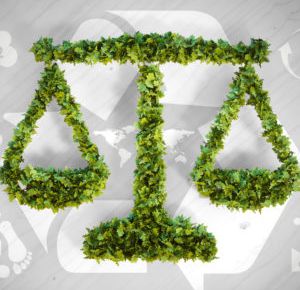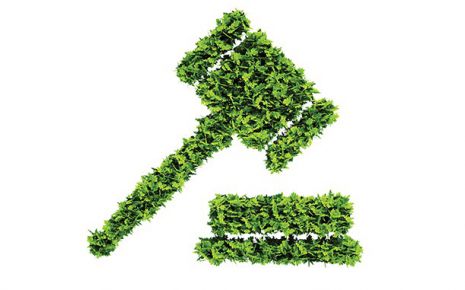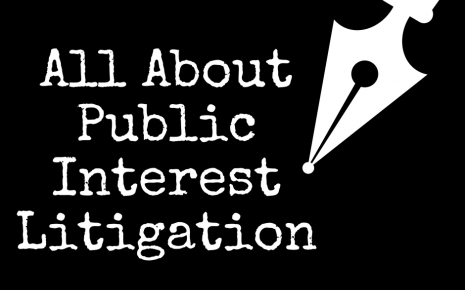River Pollution: Issues and Laws Regulating it in India
Rivers in India are much more than a large flowing water body, it is religious
faith and also a lifeline to many peoples. More than 500 Million peoples live
along with River Ganges (Ganga) who are totally depended on it in many forms be
it farming, agriculture or the basic regular use of water, and over Lakhs of
people ritually bath in it as it is considered Holy by Hindus. But today the
Ganges, and the Yamuna, the two largest and Holy rivers in India, tops in the
list of most polluted rivers of the World. The pollution will affect the health
of the population living along it or are dependent upon it by any of the
reasons.
Water pollution is a major environmental issue in India it is due to many reasons which not only include rapid growth in population but also the more dependence of technology and lack of awareness amongst peoples about the preservation of water and the effect of water pollution on their future.
It can also be noted that a large number of village ponds are being reduced and at a large scale being converted into garbage dumps which is wrong not only to the population living and dependent on that but also to the animals and cattles living and dependent on that pond.
The judiciary had propounded that the Right to Clean water comes under the ambit of the right to life and hence the scope of Article 21, Article 48 and Article 51(g) can include the right to clean water. In the case of Narmada Bachao Andolan Vs. The Union of India [i], the Supreme Court, held that the right to clean water is a fundamental right under Article 21 of the Indian Constitution. The court had observed that right to clean water is a part of the basic necessity of the human's right to life.
The state is duty bound to prevent the water from getting polluted. In the leading case of MC Mehta vs. The Union of India [ii], the court held that the preventing the water of river Ganga from being polluted is the need of the hour. In Subhash Kumar v. State of Bihar [iii], the Supreme Court recognised that the right to life �includes the right of enjoyment of pollution free water and air for full enjoyment of life'.
In the Sardar Sarovar case[iv], the Supreme Court went further and directly derived the right to water from Article 21. It stated that �water is the basic need for the survival of the human beings and is part of right of life and human rights as enshrined in Article 21 of the Constitution of India'.
Namami Gange was an important and one of the most highlighted steps taken by the Government of India on July, 2014 integrated for the development of river Ganga with a huge budget of Rs 20000 Crores with a mission to make Ganga pollution free and for conservation and rejuvenation of the National River of Ganga. The Namami Gange program was aimed to finance infrastructure investments to reduce pollution loads at priority locations on the river.
The investments are intended to exemplify, among other attributes, the high standards of technical preparation and implementation, sustainability of operations, and public participation. The majority of investments in the Namami Gange program are expected to be in the waste water sector, particularly in wastewater treatment plants and sewerage networks.
Investments will also be supported in industrial pollution control and prevention, solid waste management, and river front management. Many investments are likely to combine elements of more than one of these sectors. No doubt work has been done and some of the most important steps were creation of sewage treatment capacities, river front development, river surface cleaning, making bio-diversity centres and spreading awareness amongst the people by posters, banners, and advertisements.
Conclusion:
River or water is the most important thing one needs for his livelihood and no life is possible without water and underground waters and rivers are the main source of fresh water that can be used by plants and animals. We can dee that at many places the underground water is very less or about to finish.
The population living there don't have enough water for their livelihood and for basic needs of their life. Hence, they are moving towards river which is their only option and if the river water will also be polluted and poisonous then there will be no choice left for the human beings as well as plants and animals. Also, many plants and animals are dying daily because of that toxic and poisonous water.
The need of the hour is to look at the threat on river life more realistically, more comprehensively, and above all, with an eye on future. A scenario build-up for the future will help the decision makers to arrive at a realistic strategy to address the problem. A system of review and the will to do course corrections as and when needed will help the country to save itself for the disaster looming large.
We need to understand the importance of water for us and for our future generation and that it is needed to be conserved and cleaned. Only considering rivers as Holy will not help us in making it pollution free, but we also need to treat it as a Holy or religious faith by not doing all those things that are making it polluted or poisonous.
End-Notes:
Water pollution is a major environmental issue in India it is due to many reasons which not only include rapid growth in population but also the more dependence of technology and lack of awareness amongst peoples about the preservation of water and the effect of water pollution on their future.
It can also be noted that a large number of village ponds are being reduced and at a large scale being converted into garbage dumps which is wrong not only to the population living and dependent on that but also to the animals and cattles living and dependent on that pond.
Causes of Water Pollution:
Sewage and waste water:
Sewage, garbage and waste from households, agricultural farms and industries are dumped into rivers at very large scale. These wastes contain many chemicals and poisonous substances which are very harmful to plants and animals dependent on it and living in it.
Dumping:
Dumping of solid waste materials like plastic, glass, aluminium etc. is very dangerous and affect the water bodies a lot. These waste materials take millions of years to decompose and stay in their actual form and most of the times aquatic animals consume it and get many internal problems because of those wastes and sometimes it causes danger to their lives.
Industrial Waste:
Industries are mostly built on the bank of rivers because it is easy for them to throw the waste materials coming out from industries into it. Industrial waste contains many harmful substances like lead, mercury and petrochemicals which are very harmful to the people and environment because the waste disposed into water makes the water contaminated.
Laws Regulating Water Pollution in India:
Pollution of water is considered as a serious issue and considering it a prime issue, Government has taken few steps for its reduction and control:Water Prevention and Control of Pollution Act, 1974:
The main objective of this Act is to provide for the prevention of water pollution and to take care and maintain the water bodies. It also aims for promotion for restoration of water bodies. For better implementation of the Act, the Central Pollution Control Board and the State Pollution Control Board have been established by the Central and the State Government respectively. Under the Act, the board has the power to encourage and conduct research and investigation with a view of promoting, the prevention of contamination of water in a significant manner and also to advise the Central Government for the matters relating to environmental issues and for the prevention and control of water pollution.
The Water Prevention and Control of Pollution Cess Act, 2003:
Waste coming out from industries are one of the prime causes of the of water pollution. The waste from the industries is being disposed of into the rivers which pollute the river at a large scale. According to Section 2 of this Act, industries include any operation or process or sewage or disposal treatment or any industrial effluent. Section 3 of this Act provides an exemption to industries from levying cess on those industries, which consume water below the specified limit. Water gets polluted through the toxic or non-biodegradable substances when the processing of these materials is being done in any industry, and such industries are required to pay cess under this law.
The Indian Penal Code:
The provisions have been laid down Under the Indian criminal law to punish the person who commits an offence in contravention to the Code. Section 277 of the Code provides for the punishment to be given to the person who commits an offence of fouling of a public reservoir or a public spring voluntarily shall be liable to be punished with imprisonment of three months or with a fine of 500 Rupees or with both.
The explanation of this situation can be given through an illustration. A, a resident of Chandigarh, goes near a reservoir and voluntarily puts a toxic substance with an intention to cause harm to the environment and in consideration pollutes the water. The reservoir was fit for public use before, but after the Act of A, the reservoir became unfit for the utilisation of the public. Therefore, A was being held liable for the offence under Section 277 of the IPC, and he was punished with imprisonment of up to three months and a fine of Rupees 500.
The River Boards Act, 1956:
This act aimed to the establishment of rivers and the regulation of interstate water disputes. The Act gives the power to the State Government to establish Boards by issuing a special notification. The object of this Act is to resolve and regulate the inter-state water disputes. Article 262 of the Constitution of India gives the power to the Union to establish and adjudicate the inter-state water disputes prevailing in the country. Through this Act, awards and tribunals were being formulated to regulate the interstate dispute prevailing in a particular country.
Right to Clean Water:
The Indian Judiciary has initiated a positive step for the controlling of pollution of water. Under the Indian Constitution, the judiciary has given a liberal interpretation to Article 21 of the Constitution of India and included the right to clean water and environment under the ambit of Article 21, Article 48, Article 51(g) of the Constitution of India. Various judicial decisions throughout the history of Fundamental Rights have paved a way to the broad concept of Right to Life.
The judiciary had propounded that the Right to Clean water comes under the ambit of the right to life and hence the scope of Article 21, Article 48 and Article 51(g) can include the right to clean water. In the case of Narmada Bachao Andolan Vs. The Union of India [i], the Supreme Court, held that the right to clean water is a fundamental right under Article 21 of the Indian Constitution. The court had observed that right to clean water is a part of the basic necessity of the human's right to life.
The state is duty bound to prevent the water from getting polluted. In the leading case of MC Mehta vs. The Union of India [ii], the court held that the preventing the water of river Ganga from being polluted is the need of the hour. In Subhash Kumar v. State of Bihar [iii], the Supreme Court recognised that the right to life �includes the right of enjoyment of pollution free water and air for full enjoyment of life'.
In the Sardar Sarovar case[iv], the Supreme Court went further and directly derived the right to water from Article 21. It stated that �water is the basic need for the survival of the human beings and is part of right of life and human rights as enshrined in Article 21 of the Constitution of India'.
Namami Gange
River Ganga has a significant economic, environmental, and cultural value in India. Rising in the Himalayas and flowing into the Bay of Bengal, the river traverses a course of more than 2,500 km through the plains of north and eastern India. The Ganga basin (which also extends into parts of Nepal, China and Bangladesh) accounts for about 26 percent of India's landmass, 30 percent of its water resources, and more than 40 percent of its population. Ganga is India's holiest river and has a cultural and spiritual significance that far transcends the boundaries of the basin.Namami Gange was an important and one of the most highlighted steps taken by the Government of India on July, 2014 integrated for the development of river Ganga with a huge budget of Rs 20000 Crores with a mission to make Ganga pollution free and for conservation and rejuvenation of the National River of Ganga. The Namami Gange program was aimed to finance infrastructure investments to reduce pollution loads at priority locations on the river.
The investments are intended to exemplify, among other attributes, the high standards of technical preparation and implementation, sustainability of operations, and public participation. The majority of investments in the Namami Gange program are expected to be in the waste water sector, particularly in wastewater treatment plants and sewerage networks.
Investments will also be supported in industrial pollution control and prevention, solid waste management, and river front management. Many investments are likely to combine elements of more than one of these sectors. No doubt work has been done and some of the most important steps were creation of sewage treatment capacities, river front development, river surface cleaning, making bio-diversity centres and spreading awareness amongst the people by posters, banners, and advertisements.
Conclusion:
River or water is the most important thing one needs for his livelihood and no life is possible without water and underground waters and rivers are the main source of fresh water that can be used by plants and animals. We can dee that at many places the underground water is very less or about to finish.
The population living there don't have enough water for their livelihood and for basic needs of their life. Hence, they are moving towards river which is their only option and if the river water will also be polluted and poisonous then there will be no choice left for the human beings as well as plants and animals. Also, many plants and animals are dying daily because of that toxic and poisonous water.
The need of the hour is to look at the threat on river life more realistically, more comprehensively, and above all, with an eye on future. A scenario build-up for the future will help the decision makers to arrive at a realistic strategy to address the problem. A system of review and the will to do course corrections as and when needed will help the country to save itself for the disaster looming large.
We need to understand the importance of water for us and for our future generation and that it is needed to be conserved and cleaned. Only considering rivers as Holy will not help us in making it pollution free, but we also need to treat it as a Holy or religious faith by not doing all those things that are making it polluted or poisonous.
End-Notes:
- Narmada Bachao Andolan v. Union of India, [2000] 10 S.C.C. 664
- M.C. Mehta v. Union of India, [1987] 4 SCC 463
- Subhash Kumar v. State of Bihar 1991 AIR 420, 1991 SCR (1) 5
- Supra. i
Law Article in India
Legal Question & Answers
Lawyers in India - Search By City
LawArticles
How To File For Mutual Divorce In Delhi

How To File For Mutual Divorce In Delhi Mutual Consent Divorce is the Simplest Way to Obtain a D...
Increased Age For Girls Marriage

It is hoped that the Prohibition of Child Marriage (Amendment) Bill, 2021, which intends to inc...
Facade of Social Media

One may very easily get absorbed in the lives of others as one scrolls through a Facebook news ...
Section 482 CrPc - Quashing Of FIR: Guid...

The Inherent power under Section 482 in The Code Of Criminal Procedure, 1973 (37th Chapter of t...
The Uniform Civil Code (UCC) in India: A...

The Uniform Civil Code (UCC) is a concept that proposes the unification of personal laws across...
Role Of Artificial Intelligence In Legal...

Artificial intelligence (AI) is revolutionizing various sectors of the economy, and the legal i...








Please Drop Your Comments